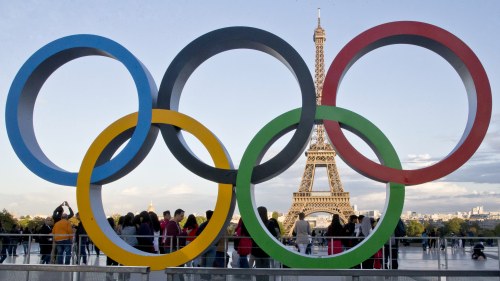Chicago, Paris, New Delhi: Host cities face challenges for large-scale events

When cities host major events, they often make decisions that are good for business but not always good for those who live there.
Cities hosting large-scale national or global events, such as the Olympics, FIFA World Cup, G20 summit, or the 2024 Chicago Democratic National Convention (DNC), undergo significant changes to infrastructure, security, transportation, and even green space in preparation for the influx of visitors. Though the benefits sometimes outweigh the negatives, not every planning decision serves the people living there.
A lot of focus is placed on how major events drive positive change — they propel economic, political, and social development; elevate the host city’s global reputation; encourage collaboration between the public and private sectors and the community; and impose deadlines that force city officials to act swiftly on issues that would otherwise get bogged down by bureaucracy.
But large-scale events have also been linked to environmental complaints and human rights violations, such as the forced eviction and displacement of host city residents, often from marginalized communities, or construction work carried out by exploited migrant workers. This brings into question what considerations and mitigation techniques host cities make when preparing for large-scale events.
DNC in Chicago: Who will benefit?
Mayor Brandon Johnson has promised the 2024 DNC will benefit all Chicagoans. Demonstrating that Chicago is a world-class city “means we must look for every possible opportunity to integrate all of Chicago, and every corner of this city, into this convention,” Johnson said in a statement to the Chicago Tribune.
The event, which runs Aug. 19-22, could draw more than 50,000 visitors and infuse $150 million into the local economy. Though the United Center will host the convention, events will be held at McCormick Place and other locations throughout the city each day, offering plenty of opportunities for Chicago to showcase itself to the masses.
Chicagoans know the local impact political conventions can have on neighborhoods. Following the 1996 DNC at the United Center — the last time the city hosted a political convention — West Town and Fulton Market saw an explosion in development that continues today. Then-Mayor Richard M. Daley spent more than $60 million beautifying the city so delegates and others had a more favorable view when traveling between locations.
Subscribe to ChicagoGlobal
This story first appeared in the ChicagoGlobal newsletter, a joint project of Crain's Chicago Business and the Chicago Council on Global Affairs.
This time around, West Siders are worried they won’t reap the economic benefits and are asking for a seat at the planning table. U.S. Rep. Danny Davis, who represents the West Side, has pledged that Black-owned businesses “won’t get left behind when contracts and jobs are awarded ahead of the event.”
The Office of Emergency Management and Communications (OEMC), tasked with overseeing the city’s 911 and 311 call centers, and coordinating resources for newly arrived asylum-seekers and large-scale events, such as next year’s DNC, is short-staffed — and only six of its 43 dispatchers speak Spanish. City officials haven’t yet said how they’ll address public safety, the migrant surge, and displacement surrounding the convention, but OEMC is on track to hire more staff next year. Many worry the department isn't keeping pace with the amount of events and asylum-seekers arriving in Chicago.
G20 summit in New Delhi, India: displacement
New Delhi got a makeover ahead of the G20 summit in September 2023 — streets were resurfaced, streetlights were installed, flowers were planted, stray dogs and monkeys were removed from neighborhoods, and buildings were painted with colorful murals. India used the two-day event to present itself as a rising global player. But the $120 million beautification price tag came at the cost of people with low incomes in the city, who said they were “simply erased” from the world stage.
Several shanty towns and shelters in New Delhi and nearby cities were destroyed in preparation, giving residents little-to-no prior notice and nowhere to go. Hundreds of houses and roadside stalls were also demolished, displacing up to 300,000 people. Other impoverished areas were hidden behind hanging cloth so foreign dignitaries couldn’t see them.
“The government is demolishing houses and removing vulnerable people in the name of beautification without any concern about what will happen to them,” said Sunil Kumar Aledia, the executive director and founding member of New Delhi-based Centre for Holistic Development, in an interview with Reuters.
Olympics in Paris: environment
As Paris prepares to host the 2024 Olympic and Paralympic Games, a lot of consideration has gone into the environmental aspect of the event to help ensure it will benefit the city long term and minimize harm to the planet — for example, cleaning up the Seine River for recreational and competitive swimming. The city aims to halve the carbon footprint compared to the average of the 2012 London games and the 2016 Rio de Janeiro games.
—Georgina Grenon, Environmental Excellence Director, Paris 2024"We want to show that another model is possible and create a legacy for major sporting events. We don’t claim to be perfect, but we want to show that we can do things differently."
To minimize new construction, the “City of Light” will use pre-existing or temporary structures, with all venues powered by 100% renewable energy from wind and solar farms. The only new competition venue will be the environmentally friendly Aquatics Centre, which was designed to meet the needs of the Seine-Saint-Denis region, where half of middle schoolers don’t know how to swim.
To further reduce carbon emissions, Paris also plans to maximize use of public transportation, add about 30 miles of cycling paths connecting venues, 10,000 nearby bike parking spots, and 3,000 additional bike rentals.
FIFA World Cup in Qatar: exploitation
Leading up to the 2022 World Cup, Qatar embarked on a massive construction project to build the necessary infrastructure for the tournament, making it the most expensive World Cup ever — and the first in the Arab world. The project included the construction of seven new football stadiums, several five-star hotels, an airport expansion, and updates to local restaurants and cafes. The country also revamped its transportation infrastructure to accommodate more than 1 million spectators.
But numerous reports of workforce mistreatment surfaced during and after the event — migrant workers were physically and mentally abused and forced to work excessive hours in extreme conditions without compensation. According to a report by The Guardian, more than 6,500 workers died on the job, though Qatari officials have never released an official number.
“For fans, especially from origin countries, the tournament will be a reminder of the cost, and the only way for FIFA and Qatari authorities to leave a positive legacy is by committing to a remedy fund to address past abuses,” said Rothna Begum, a senior researcher at Human Rights Watch.
The question of social value
National and international events help host cities increase their global profile and boost tourism. They also bring human rights, economic, and environmental issues to the forefront.
Recent changes to hosting and bidding contracts for FIFA and the International Olympic Committee show a dedication to protecting human rights at international sports events. Paris’s desire to reduce carbon emissions through the Paris Agreement, and use of renewable energy and existing structures instead of building new venues, shows that cities can host mega events while prioritizing the environment. But the question of who ultimately benefits and at what cost will become increasingly important as cities decide whether to host large-scale events going forward.
This story first appeared in the ChicagoGlobal newsletter, a joint project of Crain's Chicago Business and the Chicago Council on Global Affairs. Subscribe today.

